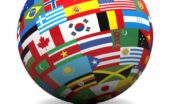Molly Minturn - My family is heartbroken to share that my father died in surgery on Monday, Feb. 10. It…
Trump Tariffs & Trade 2024-2025
Written by Diana Thebaud Nicholson // March 30, 2025 // Economy, Trade & Tariffs, U.S. // No comments
24 November 2021
Trump Wanted to Punish China.
We’re Still Paying for It.
Why Trump’s Tariffs Won’t Work
Ezra Klein with economist Kimberly Clausing who explains the possible costs and consequences of Trump’s tariffs.
29-30 March
Trump says he ‘couldn’t care less’ if auto prices rise because of his tariffs
He expressed confidence that the policy would prompt more Americans to buy cars and trucks made in the U.S.
TARIFF TROUBLES
By Adam Wren
(Politico Playbook) … On Wednesday [2 April], Trump is set to unveil a major wave of new tariffs on U.S. trading partners. …across the U.S., there are signs that far from being liberated, many businesses are starting to feel shackled to a new reality that has many worried about the direction of the economy and its likely impact on everyday Americans.
Tightening the screws: “Rising costs for screws are rippling through manufacturing supply chains” on account of Trump’s steel and aluminum tariffs, report WSJ’s Bob Tita and Ryan Felton. That’s likely to affect everything from cars to construction. Without a cost slowdown or lower interest rates, “real-estate developers are likely to start delaying construction projects or canceling them later in the year,” according to industry experts.
In the auto industry: “Everything is dead in the water until the rules are more clearly understood,” one leading U.S. automotive supplier tells the Detroit Free Press’ Jamie LaReau. New 25 percent tariffs on imported vehicles and many auto parts will kick in on Thursday — which industry experts fear will “blow up what is a complex supply chain and tack on billions of dollars in costs as companies pay tariffs on parts that cross borders, often several times, before reaching final assembly on a vehicle made in the United States.”
“President Trump’s tariffs threaten to amplify a big inflation challenge: Even before the new levies landed, a long run of everyday stuff getting cheaper was coming to a close,” writes WSJ’s Matt Grossman. Trade was a big part of the reason why prices stayed so low for so long — but that era is coming to a close, both because of Trump’s tariffs and the reality that “there’s no second China waiting to be unleashed on the global economy,” as one economist put it.
Trump officials, allies grow anxious about April 2 tariffs
The president continues to throw curveballs at businesses — and even his own team.
Just days out from Trump’s April 2 announcement of global tariffs, which he has hailed as “Liberation Day,” even those closest to the president — from Vice President JD Vance to his chief of staff Susie Wiles and his own Cabinet officials — have privately indicated that they’re unsure exactly what the boss will do, according to three people who have spoken with them.
While some details of the administration’s plan for what Trump has dubbed “reciprocal tariffs” on global trading partners are starting to trickle out, the president has at times upended them or floated contradictory policies that are keeping everyone — even his inner circle — guessing.
“No one knows what the fuck is going on,” said one White House ally close to Trump’s inner circle, granted anonymity to speak freely. “What are they going to tariff? Who are they gonna tariff and at what rates? Like, the very basic questions haven’t been answered yet.”
26-28 March
Trump’s car taxes on Americans
Robert Reich
U.S. auto dealers have warned the Trump regime that tariffs will make cars less affordable to American consumers at a time when many Americans remain concerned about inflation.
Trump has waved away such concerns, insisting his tariffs will raise revenue — enabling him to lower taxes. The White House calculates that his tariffs could raise $100 billion annually. But the mere threat of such tariffs has erased more than $100 billion from the largest carmakers’ market capitalization in recent weeks.
The Trump regime also believes its car taxes-tariffs will bring automobile manufacturing back to America. Over the long term, maybe.
But the costs will be gargantuan. And because manufacturing increasingly will be done by AI-driven machines in any event, it’s hard to make the case that there’ll be more auto jobs here.
In economic terms, Trump’s tariffs — on cars and other goods — are analogous to the Signal group chat: a dumb move that’s not just a gross mistake but also indicative of a deeper failure to understand even the basics.
With Car Tariffs, Trump Puts His Unorthodox Trade Theory to the Test
(NYT) With sweeping auto levies, the president is putting his beliefs about tariffs into practice on the global economy. Economists aren’t optimistic.
Car tariffs are likely to cause collateral damage to the economy.
President Trump and his supporters have clashed with mainstream economists for years about the merits of tariffs. Now, the world will get to see who is right, as the president’s sweeping levies on automobiles and auto parts play out in a real-time experiment on the global economy.
In Mr. Trump’s telling, tariffs have a straightforward effect: They encourage companies to move factories to the United States, creating more American jobs and prosperity.
But for many economists, the effect of tariffs is anything but simple. The tariffs are likely to encourage domestic car production over the long run, they say. But they will also cause substantial collateral damage that could backfire on the president’s goals for jobs, manufacturing and the economy at large.
That’s because tariffs will raise the price of cars for consumers, discouraging car purchases and slowing the economy, economists say. Tariffs could also scramble supply chains and raise costs for carmakers that depend on imported parts, reducing U.S. car production in the short term.
Trump places 25% tariff on imported autos, expecting to raise $100 billion in tax revenues
(AP) The tariffs, which the White House expects to raise $100 billion in revenue annually, could be complicated as even U.S. automakers source their components from around the world. The tax hike starting in April means automakers could face higher costs and lower sales, though Trump argues that the tariffs will lead to more factories opening in the United States and the end of what he judges to be a “ridiculous” supply chain in which auto parts and finished vehicles are manufactured across the United States, Canada and Mexico.
Shares of GM and other automakers slump following Trump tariffs, with Tesla the exception
Where Popular Cars (and Their Parts) Come From
Here is a selection of well-known models and where their components come from, as well as where the vehicle is ultimately assembled.



